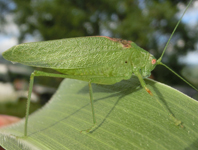Abstract
Last year I reported the rediscovery in Cambodia of Lestes nigriceps Fraser, 1924, described from Pusa, India (Fraser 1924a) but never reported since that time from India (Kosterin 2018). In my paper I presumed non-conspecificity of the male and females of the type series and made critical comments on Fraser’s appendage drawing (Fraser 1924a: plate IX: 6) and verbal descriptions (Fraser 1924a; 1933) of this species but did not consider his key for Lestes Leach, 1815 in the 1st volume of “Fauna of British India including Ceylon and Burma. Odonata” (Fraser 1933). Later I found a considerable corruption in this key, which could lead to misidentifications. (It is noteworthy to stress that Fraser explicitly provided keys for males only).
References
Asahina, S. (1983) A list of the Odonata recorded from Thailand. Part VIII. Lestidae, Systematic Entomology, Chô Chô, 8 (8), 2–13.
Dumont, H.J., Ikemeyer, D. & Schneider, T. (2017) Lestes concinnus and L. pallidus: the non-metallic species with wide, complementary ranges (Odonata: Lestdae). Odonatologica, 46 (1/2), 99–110.
Fraser, F.C. (1924a) Notes on Indian Odonata in the Pusa collection. Memoirs of the Department of Agriculture in India, 8 (8), 69–87.
Fraser, F.C. (1924b) A survey of the odonate (dragonfly) fauna of western India with special remarks on the genera Macromia and Idionyx and descriptions of thirty new species. Records of the Indian Museum, 26, 423–522.
Fraser, F.C. (1930) Indian Dragonflies. Part XXXV. Genus Lestes – continued. Journal of Bombay Natural History Society, 34, 87–101.
Fraser, F.C. (1933) The fauna of British India, including Ceylon and Burma. Odonata. Vol. I. Taylor and Francis, London, 423 pp.
Fraser, F.C. (1934) The fauna of British India, including Ceylon and Burma. Odonata. Vol. II. Taylor and Francis, London, 398 pp.
Fraser, F.C. (1951) Outline of a new classification for the legion Lestes Selys (Order Odonata). Entomological News, 60 (2), 61–69.
Kimmins, D.E. (1966) A list of the Odonata types described by F. C. Fraser, now in the British Museum (Natural History). Bulletin of the British Museum (Natural History), Entomology, 18 (6), 173–227.
Kosterin, O.E. (2018) Rediscovery of Lestes nigriceps Fraser, 1924 (Odonata: Lestidae) in eastern Cambodia. Zootaxa, 4526 (4), 561–575.
https://doi.org/10.11646/zootaxa.4526.4.8
Lahiri, A.R. (1987) Studies on the odonate fauna of Meghalaya. Records of the Zoological Survey of India, Miscellaneous publication, Occasional paper No. 99, 1–402.
Laidlaw, F.F. (1920) A list of the dragonflies recorded from the Indian Empire with special reference to the collection of the Indian Museum. Part. III. The genus Lestes and its allies. Records of Indian Museum, 19, 145–163.
Lieftinck, M.A. (1960) On the identity of some little known southeast Asiatic Odonata in European museums described by De Selys Longchamps. Memorie della Societa Entomologica Italiana, 38, 229–256.
Rafi, M.A., Khan, M.R., Zia, A. & Shezad, A. (2009) Diversity of Odonata of District Poonch and Sudhonti of Kashmir Valley – Pakistan, with a new record for the country. Halteres, 1 (1), 28–36.
Wasscher, M. & Dumont, H.J. (2013) Life and work of Michel Edmond de Selys Lonchamps (1813–1900), the founder of Odonatology. Odonatologica, 42 (4), 369–402.
Ziya, A., Naeem, M., Rafi, M.A., Naz, F., Afsheen, S. & Ilyas, M. (2011) Damselflies (Zygoptera: Odonata) of Pakistan: Part I. Journal of Insect Science, 2, 102, 1–27.

